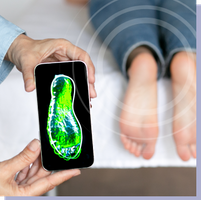Joint pain is a common condition that affects people of all ages. It can range from mild discomfort to severe, debilitating pain. Understanding joint pain, its causes, and its impact on daily life is essential to managing it effectively. Let’s delve deeper into these aspects.
What is joint pain?
Joint pain refers to discomfort, pain in any of the joints of the body. It is a common complaint, and it does not usually require a visit to the hospital. Arthritis is a common cause, but it is not the only cause. Joint pain can occur with or without movement and can be severe enough to limit movement.
Various conditions can lead to painful joints, including osteoarthritis, rheumatoid arthritis, bursitis, gout, strains, sprains, and other injuries. Age is a common factor in joint pain, as wear and tear on the joints over time can lead to pain. However, joint pain can also affect younger people, especially if they are physically active or have had an injury.
The impact of chronic joint pain on daily life
Chronic joint pain can significantly impact a person’s quality of life. It can limit a person’s mobility and make it difficult to perform everyday tasks such as walking, climbing stairs, or even holding a pen. It can also disrupt sleep and lead to feelings of fatigue and depression. According to a study by the Centers for Disease Control and Prevention (CDC), approximately 15 million people reported severe joint pain related to arthritis.
By understanding the common causes and the impact it can have on your life, you can begin to take steps toward effective treatment. In the following sections, we will discuss how to identify symptoms, cope with pain, and prevent it from occurring.
Identifying pain symptoms
Joint pain can be a significant obstacle to your daily activities. It is essential to understand the symptoms in order to seek appropriate treatment immediately.
Common symptoms of joint pain
Constant or intermittent pain: This can be continuous pain or pain that comes and goes.
Stiffness: You may have difficulty moving your joint as freely as before.
Swelling or tenderness: The joint may appear larger or feel tender to the touch.
Redness or warmth: The skin over the joint may look red or feel warm, indicating inflammation.
Small range of motion: You may not be able to move the joint through its full range of motion.
When to seek medical attention?
If you are experiencing joint pain, it is important to know when to seek medical help. Here are some situations in which you should consult a healthcare professional:
Severe pain: If your joint pain is severe and unbearable, it’s time to see a doctor.
Persistent pain: If your pain lasts more than a few days, it is recommended to get checked out.
Accompanied by other symptoms: If your joint pain is accompanied by other symptoms such as fever, unexplained weight loss, or severe fatigue, seek medical attention immediately.
Impact on daily activities: If your joint pain is affecting your ability to perform daily activities, it’s time to seek help.
Remember, early detection and treatment can make a significant difference in pain. Don’t ignore symptoms; know how to ask for help when needed.
Causes joint pain
Understanding the root cause of your joint pain is the first step towards effective treatment. There are several common causes of joint pain, each with its own set of symptoms and treatment options. Let’s delve deeper into some of the following causes:
Age-related joint pain
As we age, our joints naturally wear down. Cartilage, the cushioning tissue inside joints, gradually deteriorates, leading to pain and stiffness. According to the Centers for Disease Control and Prevention, about half of all adults over the age of 65 report having had doctor-diagnosed arthritis, a common cause of joint pain.
Arthritis as a common cause of pain
Arthritis is not a single disease, but a way of referring to joint pain or joint disease. There are more than 100 different types of arthritis, with osteoarthritis being the most common. It is characterized by pain, swelling, and reduced function in your joints.
Joint pain caused by injury
Injuries such as sprains, strains, or fractures can cause severe joint pain. These injuries can occur during sports, from falls, or from direct blows to the body. The pain from these injuries can be immediate and severe, and it can last long after the injury has healed.
Joint pain related to the disease
A number of diseases and conditions can also cause joint pain. These include lupus, gout, certain infectious diseases such as mumps, influenza, and hepatitis, and certain types of cancer. The pain may vary in intensity and may be constant or intermittent.
Understanding the cause of your joint pain is essential in determining the right treatment plan. If you are experiencing persistent joint pain, it is important to consult a medical professional for proper diagnosis and treatment.
Dealing with joint pain
When it comes to dealing with joint pain, there are a number of medical treatments that can help ease discomfort and improve quality of life. These treatments range from over-the-counter medications to prescription medications and even surgical options. Let’s take a closer look at each of these treatments.
Over-the-counter medications: These are medications that you can buy without a prescription. They include nonsteroidal anti-inflammatory drugs (NSAIDs) such as ibuprofen and naproxen, which can help reduce inflammation and pain. Acetaminophen is another common over-the-counter medication that can relieve pain, but it does not reduce inflammation. Always follow the directions on the label and ask your pharmacist or doctor if you have any questions.
Prescription medications: If over-the-counter medications aren’t enough to manage your joint pain, your doctor may prescribe stronger medications. These can include prescription NSAIDs, corticosteroids, or disease-modifying antirheumatic drugs (DMARDs) for conditions like rheumatoid arthritis. Remember, these medications should be taken under the supervision of a medical professional to monitor for possible side effects.
Surgical options: In severe cases where joint pain significantly affects your quality of life and other treatments haven’t worked, your doctor may recommend surgery. Surgical options can range from arthroscopy (a minimally invasive procedure to repair joint damage) to joint replacement surgery. The type of surgery will depend on the severity of your condition and your overall health.
Remember, the best treatment for you will depend on your specific condition, the severity of your pain, and your overall health. Always consult a medical professional before starting any new treatment.
Natural remedies for joint pain
When dealing with joint pain, it’s not always necessary to rely solely on medical treatments. There are also natural remedies that can provide relief. These methods are often less invasive and can be a good complement to traditional treatments. Let’s explore some of these natural remedies.
Herbal Supplements: Herbs have been used for centuries to treat a variety of ailments, including joint pain. Some of the most common herbal supplements for joint pain include turmeric, ginger, and willow bark. These herbs have anti-inflammatory properties that can help reduce swelling and pain. However, it is important to consult a healthcare provider before starting any new use.
Acupuncture: Acupuncture is a traditional Chinese medicine method that involves inserting thin needles into specific points on the body. It is believed to balance the body’s energy and promote healing. Some studies have shown that acupuncture can help reduce joint pain, especially in people with osteoarthritis.
Massage therapy: Massage therapy involves manipulating the body’s soft tissues to promote relaxation and pain relief. It can be especially beneficial for those with joint pain as it can help improve blood flow, reduce inflammation, and increase joint flexibility. It is recommended that you seek out a professional massage therapist who has experience working with people dealing with joint pain.
Remember, while these natural remedies can provide relief, they should not replace traditional medical treatments. Always consult a qualified medical professional before starting any new treatment.
Arthritis is a common condition that causes pain and inflammation in the joints. It can affect people of all ages, including children. Effective treatment for arthritis pain can significantly improve your quality of life. Let’s delve deeper into understanding, exploring drug treatment options, and discovering natural remedies for pain relief.
Arthritis is not a single disease, but a way of referring to joint pain or joint disease. There are more than 100 different types of arthritis. The most common types are osteoarthritis and rheumatoid arthritis. Symptoms typically include swelling, pain, stiffness, and decreased range of motion. These symptoms can be mild, moderate, or severe and may come and go. Severe arthritis can cause chronic pain and an inability to perform daily activities.
In conclusion, treating arthritis pain involves understanding the condition, exploring drug treatment options, and exploring natural remedies. By taking a proactive approach, you can effectively manage your symptoms and maintain a high quality of life.
Exercises for those with joint pain
Regular exercise can help strengthen the muscles around your joints, increase your range of motion, and reduce joint pain. Let’s delve deeper into the benefits of exercise for joint pain, some recommended exercises, and precautions to take while exercising.
Exercise can provide a number of benefits for those with joint pain. Regular exercise can help:
Reducing pain and inflammation
Improving joint function and flexibility
Strengthen the muscles around the joints
Boost energy and mood
Maintaining a healthy weight, reducing pressure on joints
Gentle exercises for the joints that can help reduce pain:
Walking: A low-impact activity that can help strengthen muscles and improve joint health.
Swimming: A weight-free exercise that allows you to move your joints without putting pressure on them.
Yoga: Helps improve joint flexibility and mobility while promoting relaxation.
Strength training: Helps strengthen the muscles around your joints, providing them with better support.
Although exercise can be beneficial for joint pain, it is important to take certain precautions to prevent injury:
Always warm up before starting your workout routine.
Choose exercises that are low-impact and gentle on your joints.
Listen to your body and stop if you feel pain.
Consider working with a physical therapist or trainer who can guide you in performing exercises correctly.
In conclusion, regular exercise can be a powerful tool in dealing with joint pain. However, it is important to listen to your body’s signals. Always consult a professional before starting a new exercise routine.
Summary: Victory in the fight against joint pain
As we wrap up our comprehensive guide to joint pain, it’s important to remember that dealing with this condition is a journey, not a destination. Let’s summarize some of the most effective strategies we’ve discussed:
We looked at a variety of strategies, including maintaining a healthy weight, staying active, and eating a balanced diet rich in anti-inflammatory foods. Exercise, especially those that strengthen the muscles around the joints, can significantly reduce joint pain. Over-the-counter and natural remedies can also provide relief.
The Importance of Medical Advice: While these strategies can help manage joint pain, it is essential to consult a medical professional for a proper diagnosis and treatment plan. They can provide personalized advice based on your specific symptoms and overall health. Remember, self-diagnosis can lead to complications.
Encouragement for those struggling with joint pain: If you are struggling with joint pain, remember that you are not alone. Millions of people around the world face similar challenges. It is important to remain positive and proactive in managing your condition. Support from loved ones and professional help can make a significant difference in your journey toward pain relief.
Joint pain can be a challenging condition to live with, but with the right strategies and medical guidance, it is possible to lead a comfortable and fulfilling life. Remember, every step you take towards treating your joint pain is a victory in itself.









